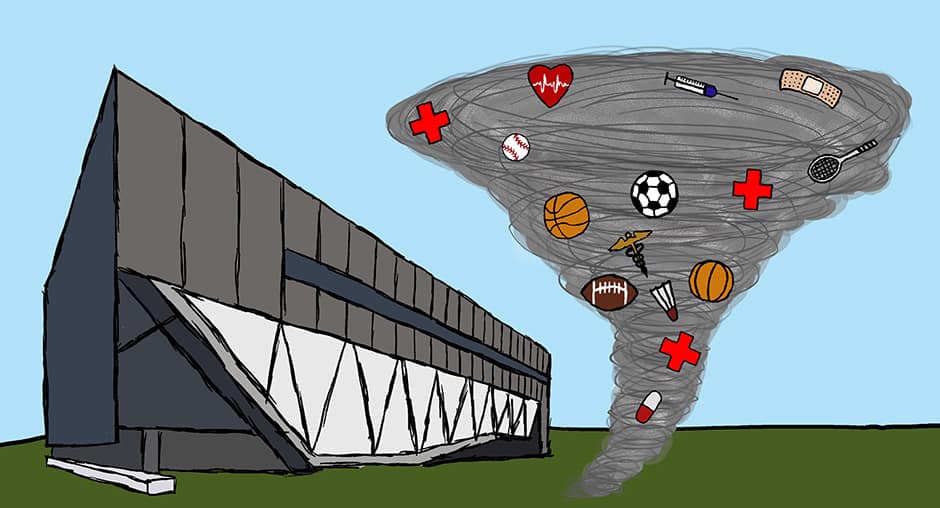Not many buildings can be held in high regard for their beauty at the University of Toronto, when compared to the Goldring Centre. As this article is being written, U of T tour guides are pointing to the Goldring Centre for High Performance Sport as a symbol of the university’s effort to encourage school spirit and athletics in light of U of T’s remarkable population growth.
In a previous article on the subject, Ira Jacobs, the dean of kinesiology and physical education, expressed that Canadians place a great value on sport, saying that “all students will benefit from the state of the art facilities that the centre has to offer.” Many students agree that the Goldring Centre has enhanced their extracurricular experience at the university. Along with its field house, two state-of-the-art volleyball and basketball courts, and the expansion of the athletic program, “Goldring is definitely an asset to U of T,” comments Nitish Kasturia, a first-year computer science student.
Going along with Jacobs’s idea, many Varsity Blues athletes comment on how the Goldring Centre adds to their experience. “It [Goldring] definitely incentivizes the athletic program, and reinforces that the university cares,” said an athlete who preferred to remain anonymous.
Even with all its acclamations, however, the Goldring Centre still faces some criticism from the student body.
Many claim that there aren’t enough resources for “non-varsities,” that the field house is usually booked by teams during peak hours, and that information about times when the field house will be inaccessible is not made clearly available. Moreover, even with its $22.5 million investment by the province of Ontario, varsity teams have not received a significantly greater crowd at their games.
Additionally, many students criticize the poor selection of equipment and lack of certain equipment in the facility. Many believe that basic equipment for strength-building is missing. Others have met U of T’s investment with criticism regarding its benefits for students. Much of the building is devoted to research, which benefits a small number of students who are conducting and engaging with the research, but it takes up room for the broader student population.
Beth Ali, director of intercollegiate and high performance sport at U of T, commented last year on Goldring’s major purpose: “We want the Blues to be a catalyst for campus pride…We want everyone to be a Varsity Blue,” she mentioned.
Granted, selling school spirit to over 40,000 students will unquestionably be an uphill battle. Until that happens, the success of Goldring to the broader student population remains unlcear.


